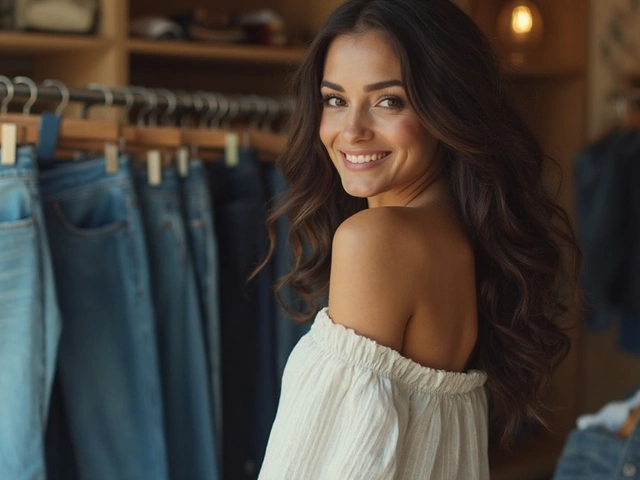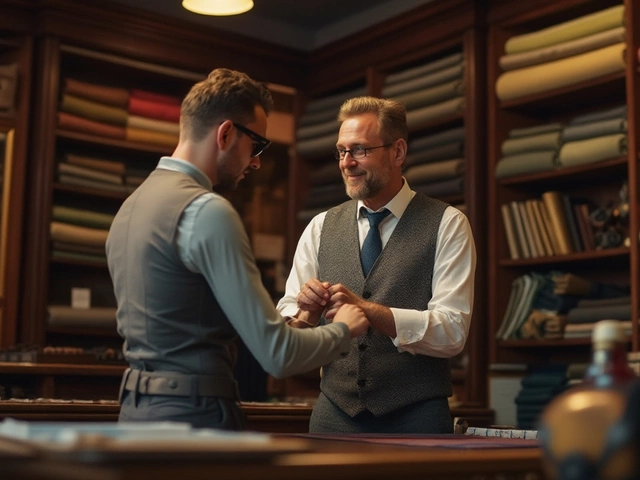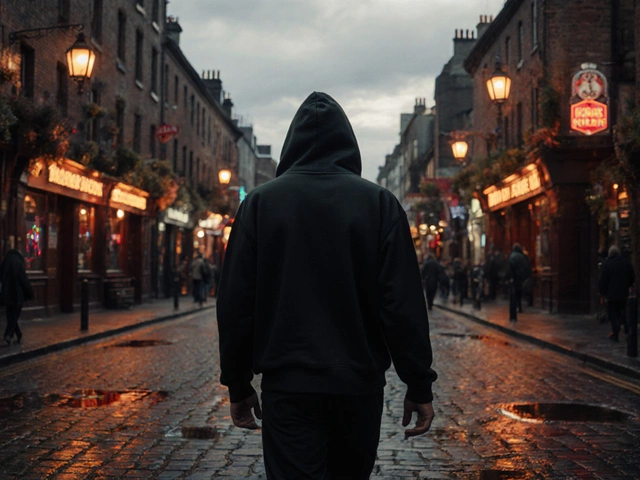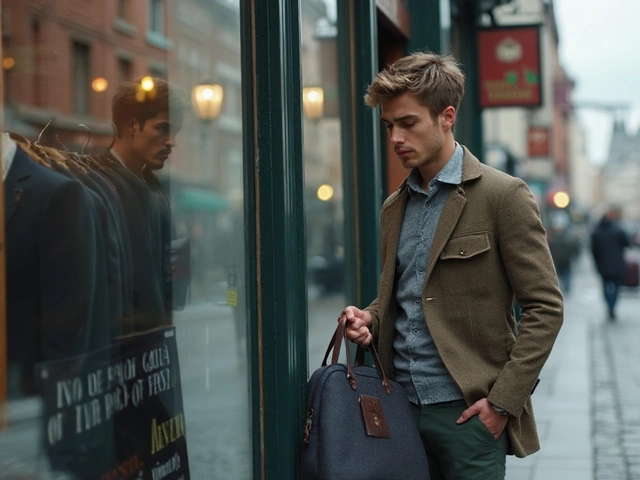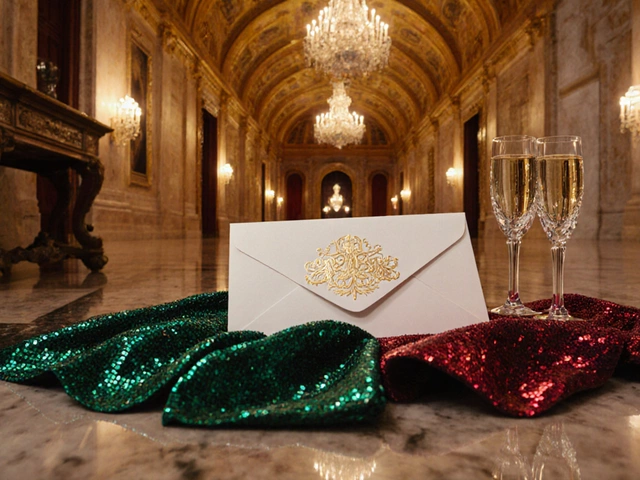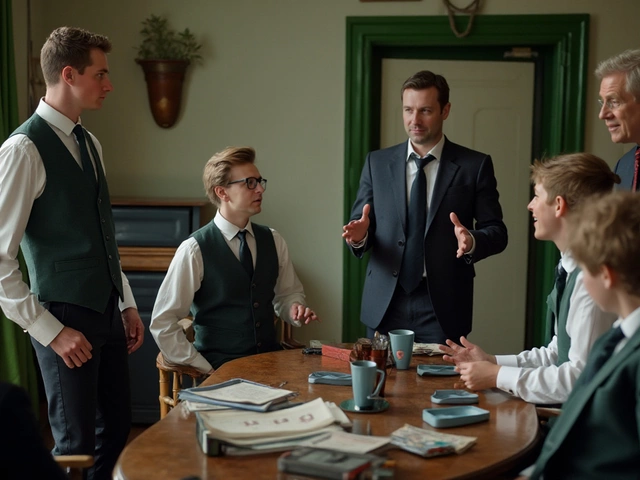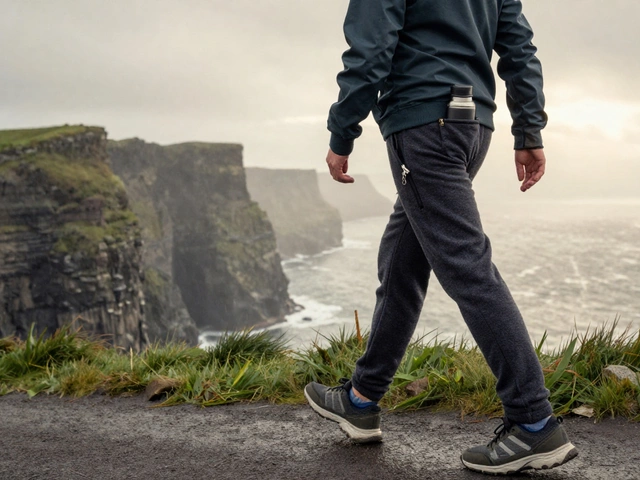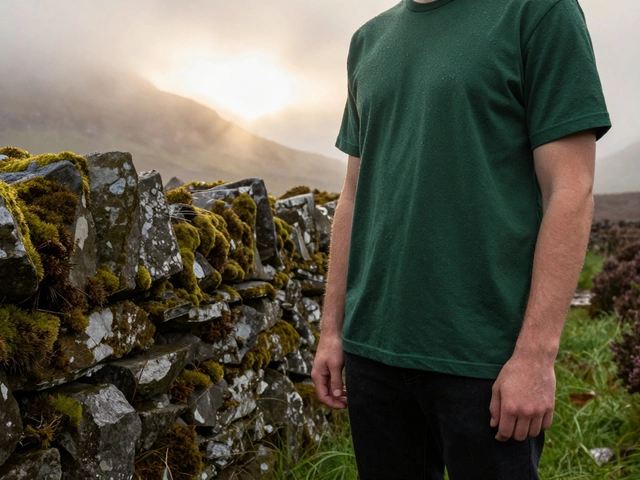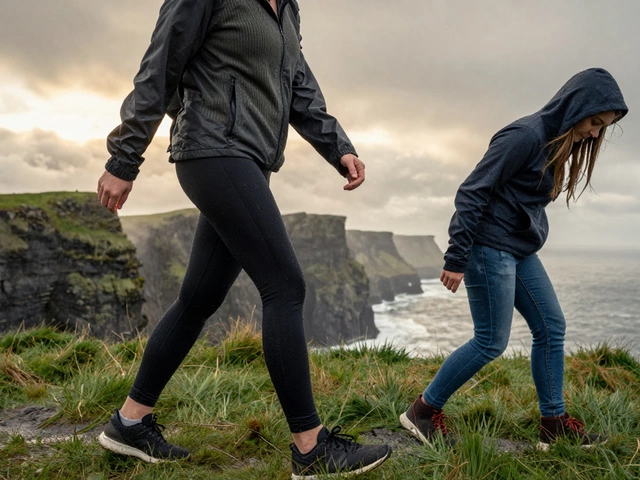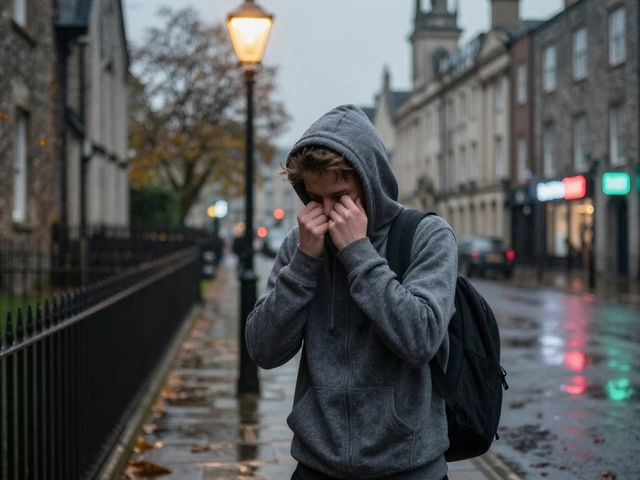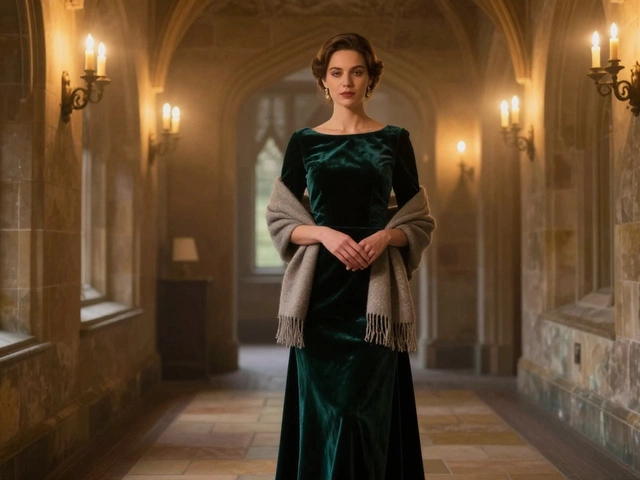25
What Is Evening Attire for Events in Ireland? Local Style Guide & Useful Tips

If you’ve ever checked your calendar and spotted a mysterious event invite in Ireland—whether it’s a wedding at Dromoland Castle, a gala in the Shelbourne Hotel, or a charity dinner at the Mansion House—you might find yourself standing in front of your wardrobe asking, “What on earth counts as evening attire here?” Between Irish weather, quirky traditions, and some legendary venues, figuring out the dress code can feel like advanced codebreaking. The truth is, there is no shortage of advice on evening dresses or evening suits, but most of it misses the heart of the Irish context. Let’s get right to the nitty-gritty of what actually works on Irish soil, among locals, and at real venues.
Understanding Irish Evening Attire: Local Traditions Meet Modern Style
Evening attire in Ireland has its own rhythm. We’re a nation famous for weather you can’t trust, a sharp sense of style mixed with practicality, and a love for good craic paired with understated elegance. "Black tie" doesn’t always mean the same thing in Dublin as it might in Paris or New York. And when the invite says "formal," what exactly does that look like in Cork or Galway?
Let’s break it down. For formal Irish events, "evening attire" usually means stepping things up several notches from your usual workwear or day-to-day wardrobe. For women, this generally translates to a full-length evening gown or cocktail dress with added details—think subtle sparkle, velvet, or satin. Men are typically looking at a tuxedo (much more common than a tailcoat here), or sometimes a comfortable dark suit with a bow tie if the ensemble is less strict.
But here’s the local twist: Irish evening events are a unique crossroads of old-school glamour and weather-proof smarts. You’ll find people in Grafton Street-bought gowns or Brown Thomas tailored suits, but there’s usually a layer of practicality. Rain? Always a risk. Combine that with a love for excellent tailoring and a healthy dose of individuality—nothing show-offish, but never bland either.
Irish events also tend to be a bit more relaxed compared to their British counterparts. While the Royals in London might expect nothing less than pristine etiquette, here people appreciate if you’ve made an effort, but it’s not about outshining everyone in the room. There’s space for self-expression—think of Saoirse Ronan’s statement dress at the IFTAs, or Pierce Brosnan’s Irish wool twist on a classic tux.
So, what’s the deal with fabrics and colours? Rich materials—velvet, silk, or wool blends—work particularly well against the Irish climate. And while black remains a classic, don’t shy away from navy, emerald green (always a winner for obvious national reasons), burnt orange, or sparkling navy sequins.
| Irish Favourite Fabrics | Weather Suitability |
|---|---|
| Velvet | Warm and chic for chilly evenings |
| Silk | Light, dressy, but layer with care |
| Tweed | Distinctly Irish, more for menswear or rural events |
| Lace | Timeless, pairs well with coverups |
If you ever feel uncertain, you’re not alone. Even locals find themselves reaching for advice from Dublin Arcade’s experienced stylists or browsing the Brown Thomas eventwear floor. My top local tip? Never underestimate the importance of a well-fitted coat or an elegant wrap—especially if you’re hopping in and out of taxis on a typical Irish drizzle-soaked night.
The Essential Dress Codes for Irish Evening Events
What makes event dressing in Ireland just a little more confusing is the creative spin on dress codes. Here are the most common ones you’ll spot, and what they mean—specifically, for the Irish context.
- Black Tie: The gold standard for Irish formal events. For women, think full-length or midi evening dresses, ideally with some extra flair— sequins, lace, or a notable accessory. For men, a tuxedo (black dinner jacket, black trousers, white shirt, black formal shoes, and, yes, a bow tie) is the rule. Brands like Louis Copeland are favourites among Dubliners who want a proper tux without fuss.
- Semi-formal: This is where things loosen up. Shorter cocktail dresses (nothing too casual), dressy separates, or elegant jumpsuits for women. Men can opt for a sharp navy or charcoal suit instead of the full tux. Add a silk tie, maybe a pocket square, but ditch the bow tie unless you’re feeling bold. Irish weddings often stick to this category for evening receptions at city hotels.
- Creative Black Tie: A favourite at art gallery evenings and film festivals—imagine the Galway Film Fleadh or the Irish Fashion Innovation Awards. This means you can add a pop of colour, a velvet blazer, or unique accessories. The focus is on modern, slightly unconventional details.
- Cocktail: Popular at business Christmas parties or charity dinners—dresses just above or below the knee, nothing too revealing. A structured, well-fitted blazer or dressy jumpsuit is always a solid Irish fallback. For men, a dark suit with or without a tie covers the bases.
- White Tie: Rare in Ireland, but you might find it at high-profile balls in places like the Royal Dublin Society. Go ultra-formal: gloves and ballgown for women; tailcoat, piqué vest, and white bow tie for men.
So, when those little symbols or words appear on your invite, check them twice. If you’re ever stuck, a peek at the social media pages of venues like Ballyfin House or Carton House can reveal the vibe. Photoshop wizardry can exaggerate, but you’ll still get a hint of hemline length and colour trends.
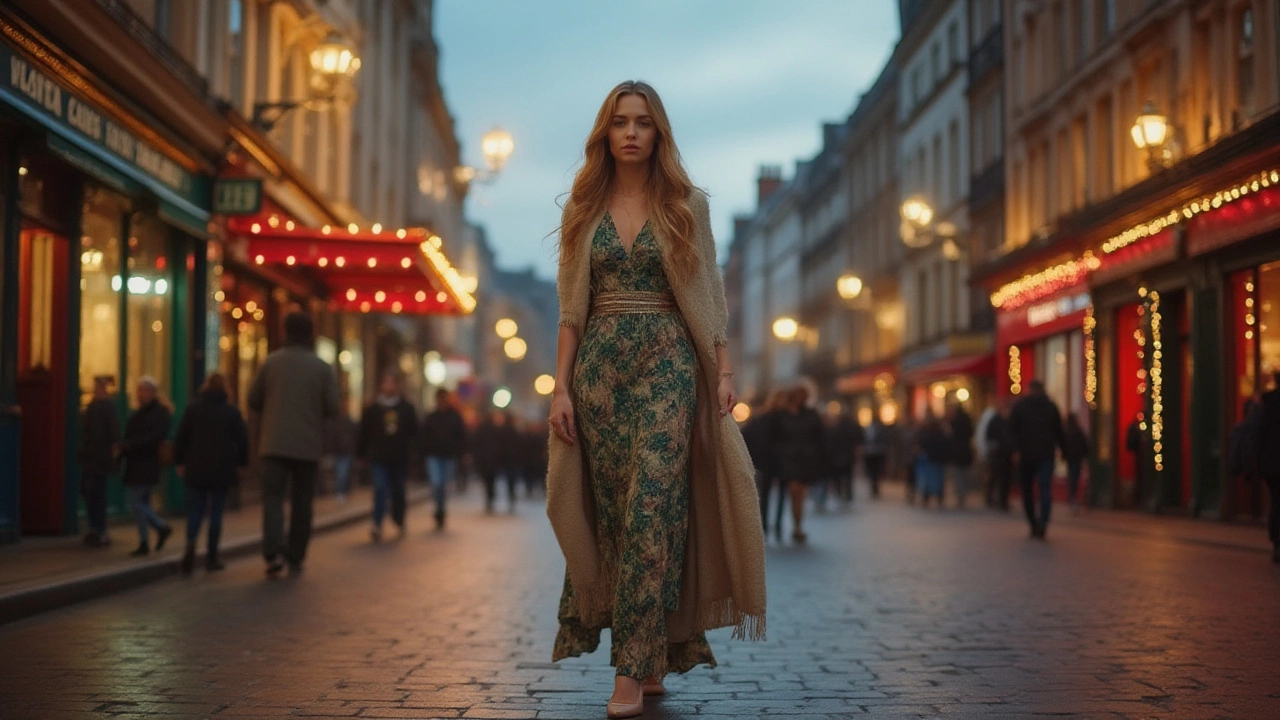
Navigating Ireland’s Weather and Finding Practical Glamour
Anyone living anywhere in Ireland knows the struggle with the weather. March or July, you’re equally likely to get rain and a chilly breeze, especially on the East coast or if you’re by the sea. Your evening attire has to look the part while holding up to wind, the odd pop of drizzle, and a temperature drop just after sunset. So, let’s get practical about dressing for events in places like the Cliff House Hotel, Castle Leslie, or even a city centre bash at the Marker.
For women, layering is the magic ingredient. Think sleek wool-blend capes, velvet shrugs, or even a contemporary aran-knit wrap in the colder months. Many Irish designers—think Chupi, Fee G, or Helen McAlinden—cater to this exact challenge, blending style with practical Irish warmth. Footwear? While some brave souls pull off strappy heels, a block-heeled or dressy boot works wonders, especially if you’re facing older cobbled streets or grassy paths at countryside estates.
Instead of bare shoulders in December, pair your dress with a tailored long coat (the Irish designer Orla Kiely is famous for chic yet warm outerwear). And mind the hem—Irish grass and rain can turn a long trailing dress into a muddy disaster if you’re not careful. Midi-lengths have boomed in popularity here for a reason. A beautiful example: the number of midi-dresses spotted at a winter wedding in County Kerry, paired with colourful heels or statement clutches.
Men aren’t immune to practical worries. Even at black tie events, a wool or cashmere overcoat is totally appropriate. Consider smart brogues or sturdy dress shoes with a good sole. Avoid patent leather if you’ll be walking outside as they can quickly scuff or slip. If you’re at a countryside do—a big thing in parts of West Cork or Donegal—tweed blazers or even a classic waistcoat give a nod to Irish tradition without looking costume-y.
Glancing through photos of style at the Galway Races or at a formal do in Limerick’s Adare Manor, you’ll see Irish guests mastering that delicate balance—polished, a little daring, but weather-ready. And for that finishing touch? Irish-made accessories—like a Galway Crystal clutch, a pair of Alan Ardiff earrings, or a Brian de Staic brooch—will always get you noticed for the right reasons.
Where to Shop for Evening Attire in Ireland
The question of where to get the perfect outfit looms large, especially if you want to avoid the dreaded “has someone else worn this?” moment. Ireland is spoilt for choice, particularly in larger cities or well-connected towns. For high-end designer pieces, Brown Thomas in Dublin (and its Galway and Cork branches) is still the go-to spot; you’ll find everything from classic evening gowns to show-stopping tuxedos. If your budget’s tighter or you want something unique, try the Irish-owned Folkster boutiques, especially known for their sustainable, vintage-inspired event wear.
On the suit front, Louis Copeland & Sons offers custom tailoring that’s legendary—no wonder you’ll spot their mark at almost every major business gala in town. For those skipping the capital, Savida in Dunnes or Pamela Scott stores across Ireland make dressing up very easy without a threatening price tag. And for the creative crowd, Om Diva in Dublin offers quirky, on-trend options you won’t find anywhere else.
If you’re visiting Ireland or just landed as an expat, renting eveningwear is gaining popularity. Renting luxurious dresses or suits from Designer Room or Happy Days Boutique is smart, especially for visitors who can’t pack a whole wardrobe. That way, you turn up in high fashion without the hassle—or the luggage.
Doing things a bit differently? Contemporary Irish designers are making headlines globally—Natalie B. Coleman, Simone Rocha, Richard Malone—offering beautiful ready-to-wear and custom looks. These are the sort of labels winning at London Fashion Week and turning heads at home, so if you want that authentic Irish flavor in your look, these designers are prime sources.
- Quick tip: If you’re stuck with a last-minute invite, department stores like Arnotts or Powerscourt Centre are lifesavers for statement jewellery, shoes, and event accessories.
Don’t forget the finishing touches. Local jewellery designers are renowned for adding that pop of personality, and Irish milliners (Philip Treacy might be a global icon, but there’s serious local talent too) lead the way with eye-catching hats and headpieces—especially popular at horse-racing events and big gala nights.
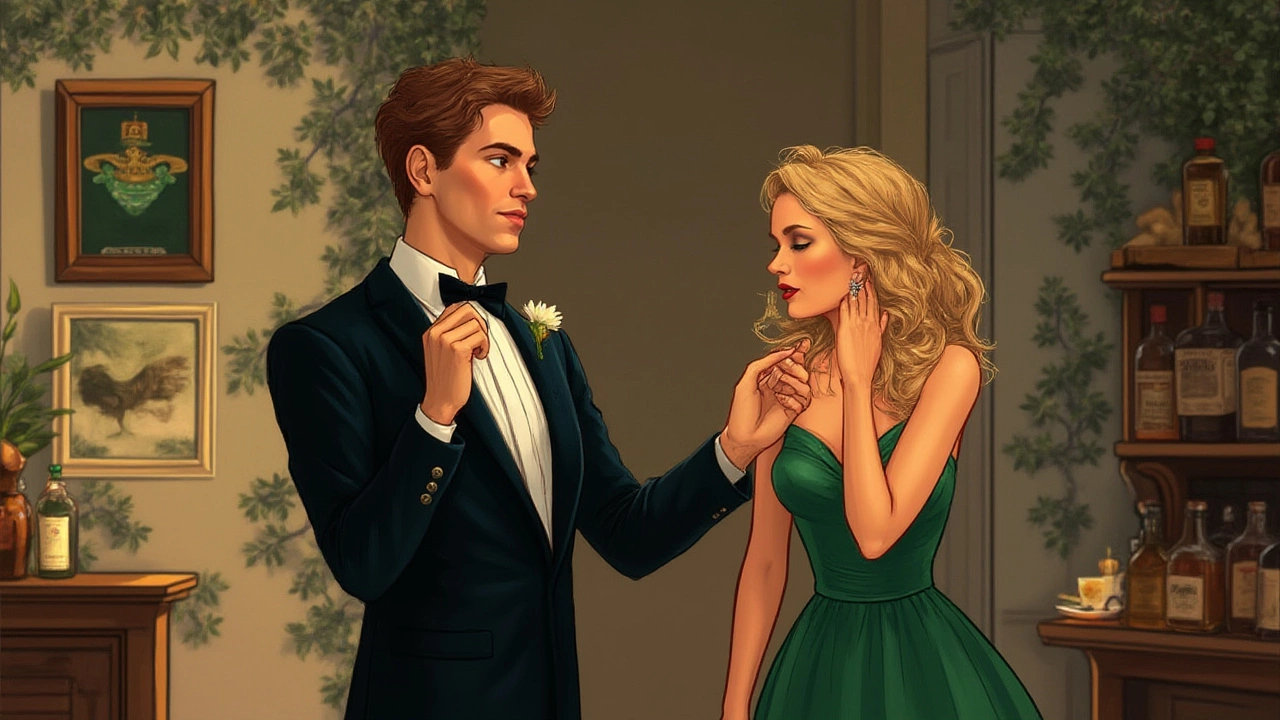
Irish Evening Attire Etiquette and Real-Life Tips
Dressing for an Irish event isn’t just about looking sharp when you arrive—it’s about being comfortable and feeling like yourself all evening, from the opening drinks to the late-night sing-song. Irish crowds rack up a lot of steps (sometimes quite literally—think of all the calling toasts, mingling, or getting roped into a céilí). So here’s how to make sure your evening attire is actually wearable from start to finish.
First off, check your invite closely. If it doesn’t explain the dress code, don’t feel awkward asking the organiser—nobody in Ireland will judge for wanting clarity. If it’s a wedding or charity ball, look for dress inspiration on the venue’s social pages: Ballymaloe’s Instagram is pure gold for real-event inspiration, and venues often repost guest photos, so you get the true picture.
Here’s a classic Irish scenario: the event sits somewhere between "very dressy" and "just polished"—the most awkward middle ground. For these, layering is vital. Bring a scarf, a pashmina, or an elegant jacket; something you can pop on or off as the room temperature swings. Avoid too-high heels unless you’re used to them (you’ll regret it by midnight on Stephen’s Green cobbles). Clutch bags are essential for chic but keep them big enough for a phone, lipstick, and a tiny umbrella. Yes, really.
For men, a simple trick is to pack a spare tie or pocket square inside your coat if you’re uncertain of the vibe. Check the hem of your trousers—Irish tailors are experts at small last-minute adjustments if needed. Even at formal events, a hint of personality—a patterned sock, a bright lapel pin, or an Irish tweed tie—shows confidence without breaking with tradition.
One little-known Irish quirk: an elegant coat check is available at big-city venues, but in rural places, you may be hanging your trench over the back of your chair. Make sure whatever outerwear you have looks sharp—it’s likely to be seen as much as your dress or suit itself.
If you ever feel your look is too much or too little, minimal jewellery and pared-back makeup are always the safe Irish fallback. But above all: comfort and joy. You’ll find that the best-dressed at any event in Ireland are usually the ones enjoying themselves—laugh lines, red cheeks, a bit of rain-wind in their hair. The Irish don’t shy from letting their personality shine with a signature ring, a borrowed family brooch, or something borrowed from a friend (it’s tradition at weddings, after all).
Ready to head out? The real magic of evening attire in the Irish market is that it’s about much more than just the clothes. It’s about taking pride in your look, yes, but more so, celebrating those fleeting evenings—rain, laughs, stiff gin, and all.

